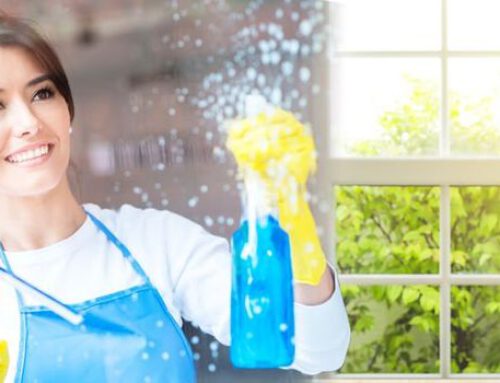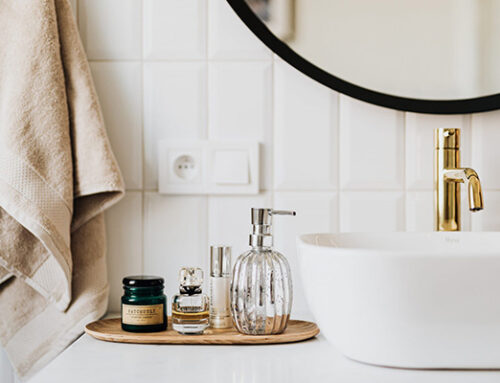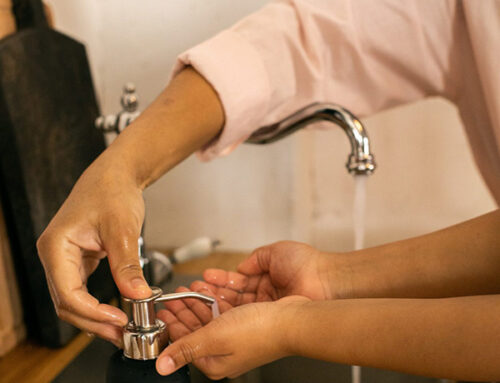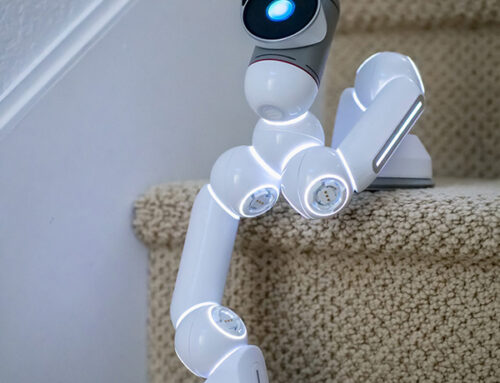Keeping carpets clean is a constant challenge for UK homeowners. Maintaining carpets requires regular attention and effective cleaning techniques, from everyday dirt and grime to stubborn stains and unpleasant odours. Many face the question of how to clean carpets effectively, as proper care not only enhances the appearance of living spaces but also extends the life of this significant home investment.
This article explores five essential DIY hacks for carpet cleaning that UK homeowners can quickly implement. These methods involve everyday household items like baking soda, white vinegar, and tools such as a vacuum cleaner and steam cleaning equipment. By following these tips, readers will learn to tackle various carpet cleaning challenges, from removing pet hair to refreshing and deep cleaning their carpets without needing professional services.
Vacuum Regularly to Prevent Dirt Buildup
Regular vacuuming is essential for maintaining clean and healthy carpets. It helps to remove dirt, dust, and allergens that accumulate over time, preventing damage to carpet fibres and improving indoor air quality.
Vacuum frequency
The frequency of vacuuming depends on several factors, including foot traffic, household size, and the presence of pets. As a general rule, carpeted living rooms should be vacuumed once to twice weekly. However, high-traffic areas may require more frequent attention, while lighter-use rooms can be cleaned once weekly.
For an average home, it’s recommended to vacuum carpets twice a week. In high-traffic areas such as hallways or living rooms, homeowners should aim to vacuum at least twice weekly to remove dirt, dust, and debris that accumulate quickly. Low-traffic areas like bedrooms can be cleaned once a week.
Households with pets may need to increase the frequency of vacuuming. Pet hair, dander, and other contaminants can build up rapidly in carpets, so daily vacuuming might be necessary to maintain a clean and healthy environment.
Vacuum technique
To ensure thorough cleaning, it’s essential to use proper vacuuming techniques:
- Use overlapping strokes in a crisscross pattern for comprehensive coverage.
- Move the vacuum slowly to pick up as much dirt as possible.
- Adjust the vacuum settings based on the carpet type.
- Use attachments for edges and hard-to-reach areas.
- Empty the bag or canister regularly to maintain suction power.
Frequent, gentle vacuuming without a beater bar helps preserve wool carpets’ texture and appearance. Synthetic carpets, being more resilient, can benefit from the agitation provided by a beater bar.
Best vacuums for carpets
Choosing the right vacuum cleaner is crucial for effective carpet cleaning. Here are some options to consider:
- Upright vacuums: Known for powerful suction, they are ideal for homes with significant carpeting.
- Canister vacuums: Offer versatility and manoeuvrability, making them excellent for homes with bare floors and carpets.
- Robot vacuums are ideal for maintaining cleanliness between deeper cleaning sessions. They are best suited for low-pile carpets and hard floors.
- Handheld vacuums: Perfect for spot cleaning and tackling small messes in hard-to-reach areas.
Consider factors such as suction power, weight, and manoeuvrability when selecting a vacuum. Look for models with HEPA filters, which trap small particles like pollen, pollutants, and bacteria, improving indoor air quality.
Learn more: Eco friendly End of Tenancy Cleaning Tips
Use Baking Soda for Odour Removal and Stain Lifting
Baking soda, also known as sodium bicarbonate, is a versatile and effective cleaning agent for carpets. It has the ability to neutralise odours and lift stains, making it an excellent choice for UK homeowners looking for a natural and cost-effective solution to carpet cleaning.
Baking soda application
To use baking soda on carpets, thoroughly vacuum the area to remove loose dirt and debris. Then, liberally sprinkle baking soda over the affected area. For general odour removal, the baking soda can be left on the carpet for at least 15 minutes or overnight for more persistent smells. For stain removal, create a paste by mixing baking soda with a small amount of water. Apply this paste to the stain and leave it for several hours or overnight.
Baking soda benefits
Baking soda has several advantages when used for carpet cleaning:
- Natural deodoriser: It absorbs and neutralises odours rather than masking them with artificial fragrances.
- Baking soda is non-toxic and safe for pets and children.
- Effective on various stains: It works on both greasy and non-greasy stains.
- Inexpensive: Readily available in supermarkets at a low cost.
- Gentle cleaning action: It is a mild abrasive, loosening dirt without damaging carpet fibres.
Baking soda cleaning process
For general carpet refreshing:
- Vacuum the carpet thoroughly.
- Sprinkle baking soda generously over the entire carpet.
- Mix 10 drops of essential oil with the baking soda before applying for added freshness.
- Leave for at least 15 minutes or overnight for better results.
- Vacuum thoroughly to remove the baking soda.
For stain removal:
- Blot fresh stains with a clean cloth to remove excess liquid.
- Sprinkle baking soda over the stain.
- Cover with a damp cloth for non-greasy stains and leave for at least an hour.
- For greasy stains, leave the baking soda overnight without a wet cloth.
- Vacuum the area thoroughly.
- For stubborn stains, repeat the process or add a small amount of washing-up liquid to the baking soda paste.
While baking soda is highly effective for many carpet cleaning tasks, it’s important to note that it may not remove old or set-in stains altogether. Some experts also caution against overuse, as the fine particles can clog vacuum filters or settle deep into carpet fibres. Therefore, it’s best to use baking soda in moderation and ensure thorough vacuuming after each application.
Try Vinegar for Tough Stains and Carpet Refreshing
White vinegar is a versatile and effective solution for tackling tough carpet stains and refreshing home carpets. This natural cleaning agent dissolves dirt, removes odours, and disinfects surfaces, making it an excellent choice for carpet maintenance.
Vinegar cleaning solution
To create an effective vinegar cleaning solution, homeowners should mix one part white vinegar with three parts warm water. This mixture can be poured into a spray bottle for easy application. A more robust solution can be made for more stubborn stains or odours by combining half a cup of warm water with four tablespoons of white vinegar, one tablespoon of baking soda, and one tablespoon of washing powder.
Vinegar stain removal technique
To remove stains using vinegar, follow these steps:
- Vacuum the carpet thoroughly to remove loose dirt and debris.
- Apply the vinegar solution directly to the stained area, ensuring it’s wet but not soaked.
- Blot from the edges towards the centre to prevent the spreading of fresh stains.
- Allow the solution to sit for about 15 minutes.
- Blot the area with a clean, dry towel to absorb the vinegar and lift the stain.
- For stubborn stains, create a paste by sprinkling baking soda over the vinegar-treated area.
- Let the paste sit overnight or until completely dry.
- Vacuum the dried baking soda thoroughly.
For tough stains, repeat the process as necessary. Remember to always test the solution on an inconspicuous area first to ensure it doesn’t damage or discolour the carpet.
Vinegar carpet refreshing method
To refresh and deodorise carpets using vinegar:
- Mix the vinegar solution in a spray bottle.
- Lightly mist the entire carpet surface with the solution.
- Allow the carpet to air dry completely.
- Vacuum the carpet thoroughly once dry.
For areas with persistent odours, such as those caused by mould or bacteria, a vodka solution can be used as an alternative. Spray the affected area with vodka, let it sit for 15 minutes, then blot with a clean rag.
White vinegar’s natural acidity helps to neutralise odours and remove stains without harsh chemicals. However, it’s important to note that vinegar should not be used on natural stone surfaces or hardwood floors, as it may cause damage. Always use caution and test any cleaning solution before applying it to larger carpet areas.
Remove Pet Hair with a Squeegee
For UK homeowners struggling with pet hair on carpets and upholstery, a simple yet effective solution has emerged: using a squeegee. This unconventional method has gained popularity among cleaning enthusiasts for its ability to remove stubborn pet hair that vacuums often miss.
Squeegee technique
To use a squeegee for pet hair removal, follow these steps:
- Choose an appropriate squeegee. A window squeegee with a rigid rubber blade works well for carpets, while a smaller plastic model might be better for stairs or upholstery.
- Attach the squeegee to an old mop handle for easier manoeuvring on larger carpet areas.
- Pull the squeegee slowly along the carpet in sections, applying gentle pressure.
- Work in a consistent direction to gather the hair into clumps.
- Vacuum the loosened hair and debris afterwards for a thorough clean.
For upholstery, use the squeegee directly on the fabric, focusing on areas where pet hair tends to accumulate.
Squeegee benefits
Using a squeegee to remove pet hair has several advantages:
- More precise cleaning: It allows better access to corners and edges than a vacuum.
- Effective on short-hair carpets: The squeegee’s design is ideal for dislodging hair stuck in short carpet fibres.
- Versatility: It works on carpets, rugs, and upholstery, including areas where vacuum attachments may be ineffective.
- Cost-effective: A squeegee is an inexpensive tool that improves cleaning results significantly.
Pet hair removal tips
To maximise the effectiveness of the squeegee method:
- Use a damp squeegee for better hair collection on some surfaces.
- For very hairy carpets, consider using the squeegee method every other week in addition to regular vacuuming.
- Try rubber gloves as an alternative. Wet the gloves and lightly rub the carpet to lift pet hair.
- Consider using a robot vacuum to handle everyday dust and loose hair for daily maintenance, reserving the squeegee for deeper cleaning sessions.
- The squeegee can be particularly useful on upholstery when vacuum attachments fail to remove embedded pet hair.
By incorporating the squeegee method into their cleaning routine, UK homeowners can significantly reduce pet hair on their carpets and furniture, maintaining a cleaner and more hygienic home environment.
Steam Clean for Deep Carpet Rejuvenation
Steam cleaning benefits
Steam cleaning is an eco-friendly and safe method for deep carpet rejuvenation. It largely relies on water, reducing the need for harsh chemicals in the home. This makes it a safe option for families and pets alike. The process penetrates deep into carpet fibres, removing ingrained dirt and dust that regular vacuuming might miss. It also effectively kills mould, viruses, and germs, creating a healthier living environment.
One of the most significant benefits is odour removal. Steam cleaning effectively eliminates unpleasant smells from pets, cooking, or other sources that soft fabrics tend to absorb. It refreshes the carpet, leaving it smelling clean and fresh.
Steam cleaning process
To steam clean carpets effectively, follow these steps:
- Clear the room of furniture or protect heavy items with tin foil under their feet.
- Thoroughly vacuum the carpet to remove loose debris.
- Treat any visible stains before steam cleaning.
- Fill the steam cleaner with hot water and the appropriate cleaning solution.
- Start in a far corner and work backwards towards the door to avoid stepping on a damp carpet.
- Move the machine slowly, allowing it to inject the hot water and cleaning solution into the carpet fibres.
- The machine will then extract the dirty water and dislodged dirt and debris.
For a more natural approach, consider using a 50/50 solution of distilled white vinegar and hot water instead of commercial cleaning solutions.
Steam cleaning frequency
Generally, carpets benefit from a deep steam clean every 12 to 18 months. However, certain factors may necessitate more frequent cleaning:
- Households with pets should steam clean every 6 to 12 months due to increased dirt, dander, and oil buildup.
- Homes with smokers may require cleaning every 3 to 6 months to remove lingering odours and nicotine deposits.
- People with allergies might benefit from steam cleaning every 3 to 6 months to remove allergens.
- Light-coloured carpets and those with long pile may need more frequent cleaning to maintain appearance.
After steam cleaning, allow the carpet to dry completely before replacing furniture or walking on it. This can take anywhere from 6 to 24 hours, depending on the carpet and environmental conditions. Use fans or open windows to speed up drying and prevent mould growth.
FAQs
- How can I create a DIY carpet cleaning solution at home?
To make a homemade carpet cleaner, mix ¾ cup of hydrogen peroxide, ¼ cup of white vinegar, 5 drops of essential oils, 2 tablespoons of dish soap, 2 tablespoons of fabric softener, and one gallon of hot (but not boiling) water. This mixture offers a clean and effective alternative to commercial products. - What is the best method to manually clean carpets in the UK?
Start by preparing a bucket of water mixed with dish soap until it becomes bubbly. Use a sponge or a soft-bristled carpet brush to scrub the carpet, removing any trapped dirt. Apply the cleaning solution with a spray bottle to avoid soaking the carpet too much for best results. - What natural remedies are effective for carpet cleaning?
A simple home remedy for cleaning carpets involves mixing equal vinegar and water in a spray bottle. Sprinkle baking soda on the carpet first, then spray the vinegar-water mixture over it. The reaction will cause fizzing, which helps lift dirt. Blot the area with a cleaning rag and repeat if necessary for tough stains. - What is the quickest and most straightforward way to clean a carpet?
Mix equal parts baking soda and salt for a fast and easy cleaning method. Sprinkle this mixture liberally over the carpet and lightly spritz with water from a spray bottle. Scrub the mixture into the carpet fibres using a brush, then wipe the area with old towels or rags to remove the loosened dirt.






